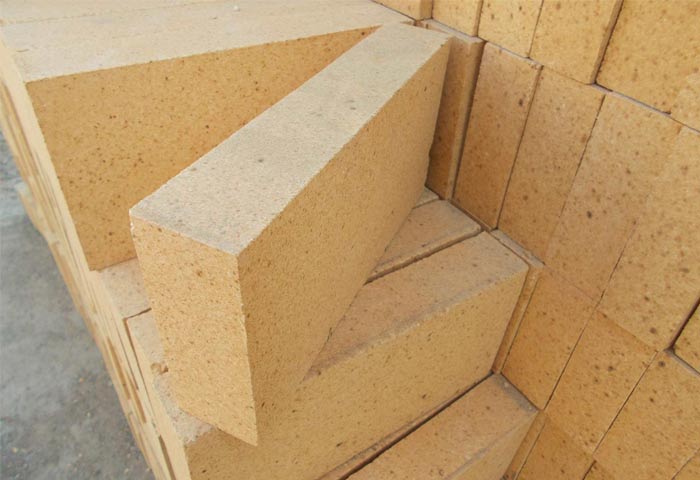According to the introduction on the role of high-quality silica bricks in the coke oven, we understand the role of silica bricks in the coke oven. Of course, refractory plants need more than one raw material for coke oven production. Kabilang sa mga ito, clay bricks are also frequently used in coke ovens, and clay bricks are manufactured products made of calcined refractory clay (clinker) and some soft refractory clay (bonded clay) through the process of crushing, mixing, pagmomolde, pagpapatayo ng mga, at pagpapaputok.
The main mineral composition of clay bricks is kaolinite, i.e. refractory clay and kaolinite, the chemical composition of which is AL2O3-2SiO2-2H2O accounting for more than 90%, the rest is K2O, Na2O, CaO, MgO, TiO2 and Fe2O3 and other impurities, accounting para sa tungkol sa 6% sa 7%.


Introduction Of Clay Bricks For Coke Ovens
The characteristics of clay bricks for coke ovens are as follows.
1. The refractories of clay bricks and the refractories of clay refractory products are low. And increases with the increase of Al2O3 content in the products, its refractories is generally 1580 ~ 1750 °C.
2. Load softening temperature of clay bricks, the load softening temperature of clay refractory products is relatively low, usually below 1300 °C. From the beginning of softening to deformation (compression) 40%, it’s temperature interval when between 150 ~ 250 °C.
3. Thermal stability of clay bricks, clay refractory products have good thermal stability, the total volume expansion when heated to 1100 ℃ is very small, and the change is uniform, so the ability to resist drastic temperature changes.
Ordinary clinker clay brick water cooling times for 10 sa 20 times, more clinker clay brick water cooling times are generally more than 50 times, some as high as 100 times or more.
4. Clay brick slag resistance, clay refractory products of the main chemical composition of SiO2 and Al2O3, and SiO2 content are greater than Al203, so the clay brick is weakly acidic.
Kaya nga, the ability to resist acidic slag erosion is stronger than the ability to resist alkaline slag erosion.
5. The re-firing line of clay bricks changes and clay refractory products are manufactured with soft clay as the binding agent. Because the bonding agent and clinker mineralization are not complete in the firing process, so clay bricks at high temperatures for long-term use will produce irreversible volume shrinkage (residual shrinkage) or volume expansion due to recrystallization. This phenomenon weighs the change of firing line, for clay brick products require residual shrinkage of no more than 1%.
Due to the above characteristics of clay bricks, for modern large-volume coke ovens, clay bricks are not suitable for high-temperature parts. And mainly used for lower temperature and fluctuations in the parts, such as furnace door, rising pipe lining brick, small flue lining brick, furnace roof, heat storage chamber sealing wall, and lattice brick. Because the refractory brick raw materials from a wide range of sources are easy to manufacture, and low cost, some small coke ovens, can be used for clay brick masonry, but in operation, should be strictly controlled temperature, to prevent premature damage to the roof.
